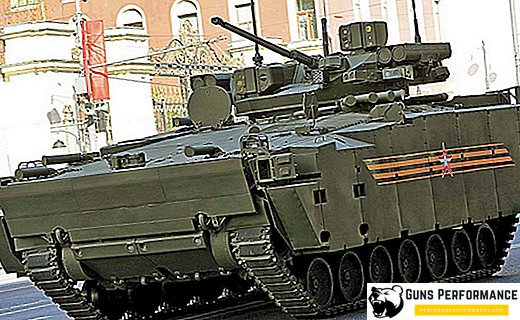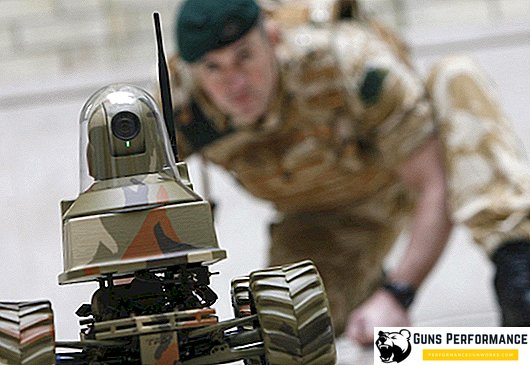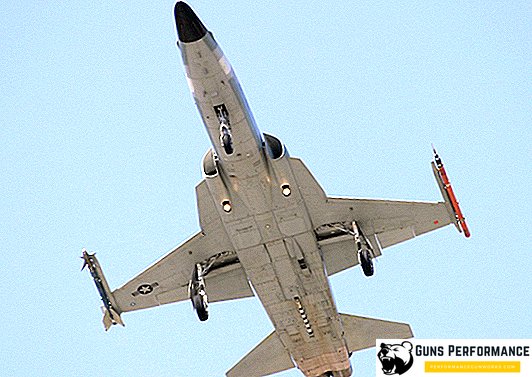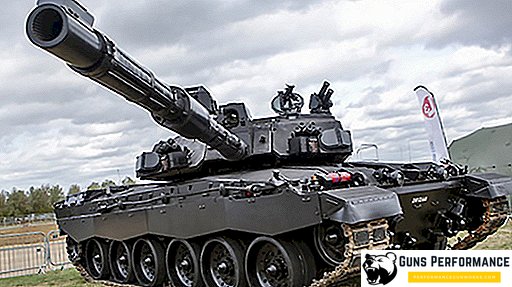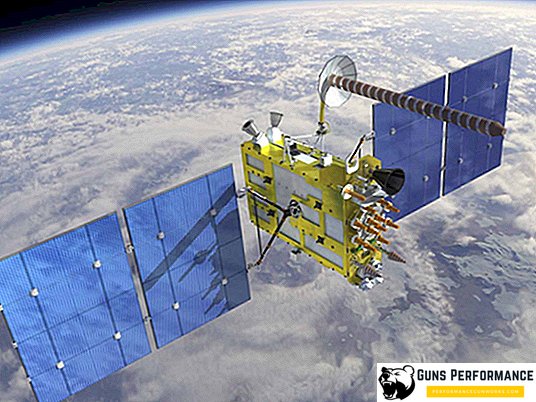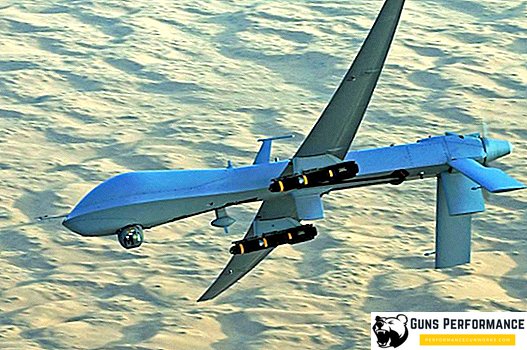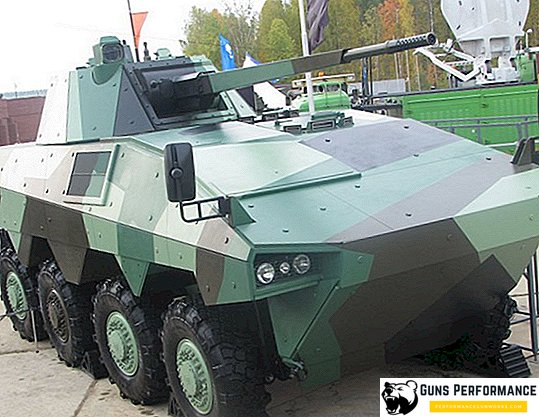The IL-12 is a mid-range piston passenger aircraft, developed in 1945 by the experimental design bureau of S. V. Ilyushin. Serially produced in the years 1946-1949.
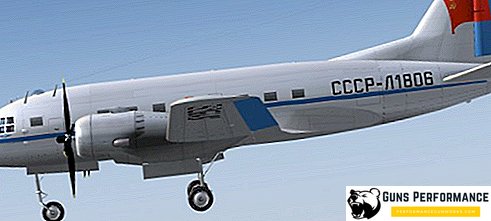
The history of the creation and operation of IL-12
In the fall of 1943, the OKB S. Ilyushin Design Bureau decided to start the development of a passenger aircraft, which was to be equipped with 4 M-88B piston engines (which were also used in the IL-4) and had to replace transport and passenger Li-2 and Douglas DC-3, operated in the USSR at that time. However, due to a number of drawbacks of this design (in particular, inefficiency and low aerodynamic qualities), this option was rejected.
Subsequently, the design of the future aircraft (known as the IL-12) has undergone major changes. So, it was decided to abandon the M-88V engines, which were replaced by diesel ACh-31. It was also decided to provide the plane with only two engines. Already in the spring of 1944, the layout and general construction of the IL-12 was approved by S. V. Ilyushin.
The first prototype of the aircraft was built in 1945, and in the summer of the same year its first flight was made. However, a number of flaws in the ACh-31 engines were revealed, and it was soon decided to change them to petrol piston AL-82FN, and therefore the design of the aircraft was changed.
The first flight of the IL-12 with new engines took place in early 1946, after which the state tests began. In the autumn of the same year, the aircraft was launched into serial production by order of the USSR Aviation Industry Ministry.
At the beginning of the next, 1947, operational tests of the IL-12 were conducted. According to their results, it was concluded that the IL-12 is quite simple to control, is stable in the air, but does not have the ability to carry out a continued take-off. However, in the summer of the same year began commercial operation of the aircraft.
The Il-12 showed all its strengths on domestic flights, due to which in 1948 it was decided to start using it on international airlines. At the same time, the first regular flight for which the IL-12 was “delivered” was Moscow-Sofia. Shortly thereafter, the aircraft began operating regular flights to the capitals of the Warsaw Pact member countries, as well as to Stockholm, Helsinki, Kabul and Tehran.

Another test of the IL-12 "for durability" was its longest flight - Moscow-Khabarovsk. This flight was carried out in 28 hours, with 5 interim landings carried out. Another serious field for the activity of the aircraft was Antarctica, where its IL-12T modification was widely used.
However, in the late 1950s, the sunset of the era of the aircraft began. This was mainly due to the fact that a year after its development, the Ilyushin development bureau created an improved and more powerful passenger aircraft, the IL-14, which gradually began to force the IL-12 out of service. Finally, the IL-12 was decommissioned in the Soviet Union in 1968. However, in China, where the aircraft was delivered for some time, the IL-12 was operated until the fall of 1993.
In total, during the production period (from 1946 to 1949), about 660 IL-12 aircraft were built, of which 37 were lost in aviation accidents and catastrophes. Thus, with the number of lost cars in 5.5% of the total, the IL 12 is a very reliable and unpretentious air carrier. It was also noted in the classification of NATO, according to which this aircraft has the designation "Coach" - intercity bus.
Overview and flight characteristics of the IL-12
IL-12 is an all-metal nizkoplan normal aerodynamic configuration. The empennage of the aircraft is one-fin, and the power plant is represented by two piston engines ASH-82FN. Chassis IL-12 has three supports (nose and two side, located at the bottom of the engine nacelles).
Flight performance of the aircraft:
| Parameter | Il-12 1945 | Il-12 1946 | Il-12 1947 | IL-12 1950 |
| Engine | 2 × ACh-31 | 2 × ASH-82FN | ||
| Engine power, hp | 2 × 1900 | 2 × 1850 | ||
| Type of propeller (number of blades) | AB-7E (3) | AB-9E (4) | ||
| Screw diameter, m | 4,4 | 4,1 | ||
| Take-off weight, kg | 16000 | 16380 / 17250 | 17500 | 16100 |
| Empty weight, kg | 11600 | 11280 / 11000 | 11350 | 11300 |
| Commercial load, kg | 2900 | 2565 | 3040 | 1740 |
| Flight range with payload, km | 1500 | 960 1150 | 1250 | 1500 |
| Maximum speed at height (m), km / h | 445 (5000) | 407 (2060) | - | 398 (2050) |
| Cruising speed, km / h | 325 | 350 / 347 | 344 | 330 |
| Runway length, m | 365 | 475 / 500 | 615 | 460 |
| Run length, m | 450 | 563/700 | 700 | 600 |
| Number of passengers | 27 | 27 | 32 | 18 |

Modifications IL-12
There are four main modifications of the IL-12:
- IL-12 - the basic modification of the aircraft, usually having a passenger capacity of 27 people. However, versions were also produced with other variants of the cabin layout and, as a result, with a different number of passenger seats.
- IL-12B - a modification of the IL-14, equipped with a number of design improvements, as well as a new anti-icing system.
- IL-12D - a transport modification of the aircraft. Designed for the carriage of goods weighing up to 3.7 tons or for the possibility of landing up to 38 people.
- IL-12T - modification of IL-12, intended for the transport of goods. This model has received very wide application in the Polar Aviation due to its rather high payload and unpretentiousness.
The advantages and disadvantages of IL-12
The Il-12 was able to quickly “conquer” the domestic passenger airlines of the Soviet Union, and then just as quickly and “settle” on international airlines. The secret of his success was quite simple: this aircraft was the first fully passenger aircraft, developed and produced in the USSR. Simplicity in the control of the IL-12 was also repeatedly noted, thanks to which it was available for development even to not the most experienced pilots.
In addition, it is worth noting the greater reliability of the aircraft, which is proved by the number of aircraft crashes with its participation: only five and a half percent of the total IL-12 produced was lost, which for that time was a fairly good indicator.
Thanks to the IL-12, a new era began in the life of piston aircraft. In particular, it was on this basis that the more advanced IL-14 was developed and put into mass production, which was operated an order of magnitude longer — right up to 1989.

As for the shortcomings of the aircraft, the main one is the impossibility of the implementation of the continued takeoff. This meant that in the event of failure of one of the IL-12 engines, there was a small chance of landing intact. It is this deficiency that became the main headache of the development bureau of S.V. Ilyushin when developing the IL-14.
You can also point to a number of relatively minor defects in the design of the machine. In particular, these are some aerodynamic drawbacks of the IL-12, as well as errors in the design of the wings of its chassis.
Conclusion
IL-12 is the first post-war aircraft developed in the USSR for civilian needs. Thanks to this aircraft, the experimental design bureau S.V. Ilyushin obtained the first practical experience in creating passenger aircraft, accumulated over the years and with new developments, which ultimately, over the years, led to the creation of much more advanced machines, such as the IL-62 , IL-86 and IL-96. And for IL-12, the title of “firstborn” of the post-war passenger aviation bureau will be fixed forever.



